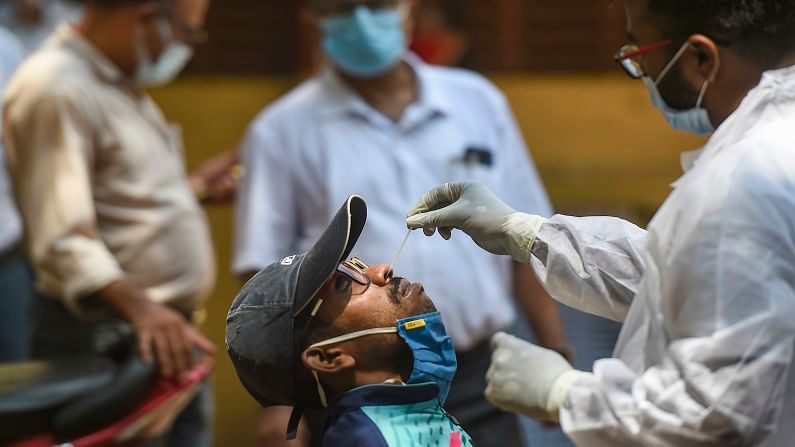The average length of stay in hospitals has gone down, say authorities
According to government guidelines, any patient who does not have fever for three consecutive days, is discharged and sent back home for home quarantine

A second wave of COVID 19 infection is threatening the country. At a time when many people have lost jobs, got pay cuts and even suffered businesses losses, nothing can be more unnerving than an out-of-the-budget medical expenditure.
In the first wave that hit the country in 2020, medical expenditure zoomed as the middle class was singed by more-than-a-million rupee bills from hospitals for about 10-14 day hospital stay with and without ventilator support.
The second wave is arguably a lesser scourge till now with lower mortality, the healthcare infrastructure a little better prepared to handle patients and rising vaccination programmes.
But, in the unfortunate instance of the virus striking you, what is the likely pinch in your pocket?
Hospital authorities pointed out that the average length of stay has gone down in the second phase. In 2020, the average length of stay in hospitals was more than 10 days. Right now it has gone down to 5-7 days depending on the course of Remdisivir which is for five days.
“Treatment cost has decreased for general bed patients by around 10% but ICU cost remains the same, depending on how many days a patient stays on ventilator or in HDU,” said an official of Kolkata’s AMRI hospital.
According to government guidelines, any patient who does not have fever for three consecutive days, is discharged and sent back home for home quarantine, said an official of another hospital.
However, COVID treatment is covered in the Ayushman Bharat scheme that comes with a cap of Rs 5 lakh per family per year.
“The cost of hospitalisation is less than what it was in the first phase. While the state government is offering free treatment for COVID patients in its hospitals, the Swasthya Sathi insurance covers treatment of COVID patients in private hospitals,” said an officer of the West Bengal state health department.
In the first few months of the first wave in 2020, there was a hue and cry all over the country following allegations of exorbitant charges by private hospitals that often crossed the Rs 1 lakh a day mark.
Following the outcry, various state governments issued directions capping different charges that the private healthcare institutions could charge patients.
With the second wave taking shape, those controls are again coming into force.
In June-July last year, almost all the major states announced ceilings on charges on head such as the price of PPE kits, doctor consultation, isolation beds, ICU charges with and without ventilators.
In the third week of June, acting on the suggestion of a committee led by NITI Aayog member V K Paul, the ministry of home affairs put a ceiling on the treatment cost for private hospitals in the national capital. The directive said a hospital could charge patients Rs 8,000-10,000 for an isolation bed per day and Rs 13,000-15,000 for a bed in an ICU without a ventilator. If the patient needed a ventilator, the charges should be between Rs 15,000 and Rs 18,000 a day. The PPE charges would be included in the cost.
Before this directive, there were reports of hospitals charging more than twice this ceiling.
“The pinch depends on the rate and the stay in a hospital. The length of average stay of a patient in a hospital is less in the second phase,” said the spokesperson of a hospital in Kolkata.
In the first phase, a patient with moderate symptoms stayed in a hospital for about 7-10 days while for severe conditions patients needed a month of hospitalisation.
The charges of treatment in a private hospital in Kerala are however, far lower. In July, chief minister Pinarai Vijayan announced that the daily charges in private hospitals were Rs 2,300 in general ward. It went up to Rs 6,500 per day in an ICU without ventilator support and Rs 11,500 in case the patient needed a ventilator.
However, treatment in government hospitals in Kerala were free.
Maharashtra, which is the COVID hotspot in the second wave, also capped charges for the benefit of the common man.
While the cost of a bed in a routine ward was permitted to be a maximum of Rs 4,000, that in an ICU without ventilator was Rs 7,500 and Rs 9,000 with ventilator support.
The bed charges in Telangana were the same as in Maharashtra.
In Maharashtra, the cost did not include the cost of PPE and high-end drugs or high-end investigations such as MRI, PET scan and CT scan. However, the cost of low-end charges such as USG, X-Ray, ECG, 2D Echo were included in the charges.
In June, the Tamil Nadu government announced that the beneficiaries of the Chief Minister’s Comprehensive Health Insurance Scheme cannot be charged more than Rs 15,000 per day. For non-critical patients the charge will be Rs 5,000 a day. However, an additional amount of Rs 2,500 for RT-PCR test can also be charged. For home visits for the test, the test could cost Rs 3,000.
In Uttar Pradesh the administration stipulated charges for different categories of treatment for moderate, severe and very severe symptoms. The charges of the hospitals were restricted between Rs 8,000 and Rs 15,000 a day. The costs were different in private hospitals of tier A, B and C cities. Among the A tier cities were Noida, Ghaziabad, Meerut, Kanpur, Lucknow and Agra.
Some of the points in the advisory issued to hospitals in West Bengal by the state government last year were: 10% discount on high-end drugs, 20% discount on investigations and consumables, a ceiling of Rs 1,000 on doctor consultation fees. The last item could be doubled only if a super specialist needed to examine the patient.